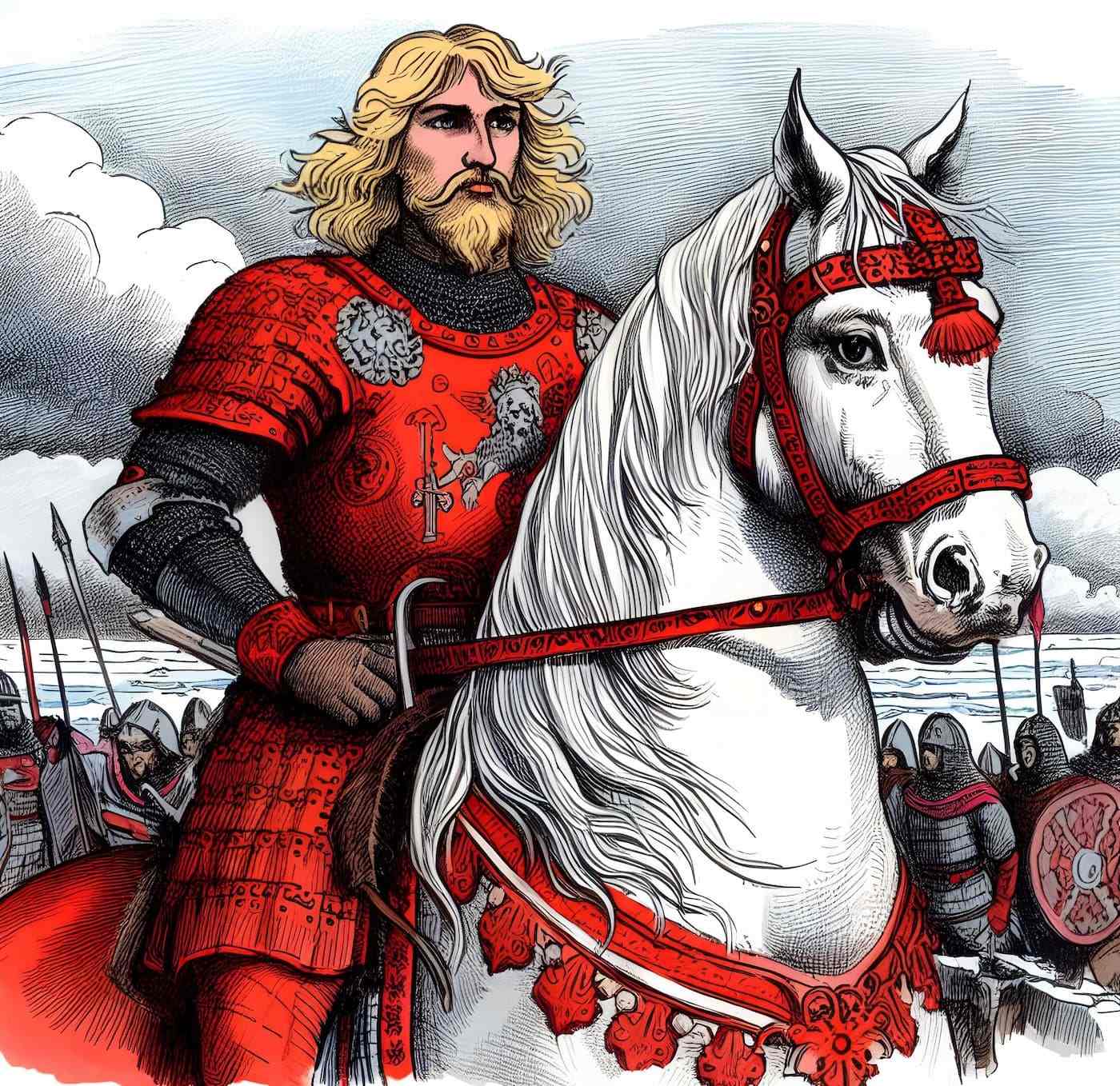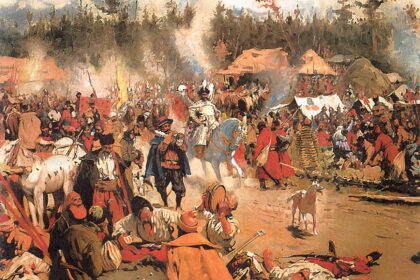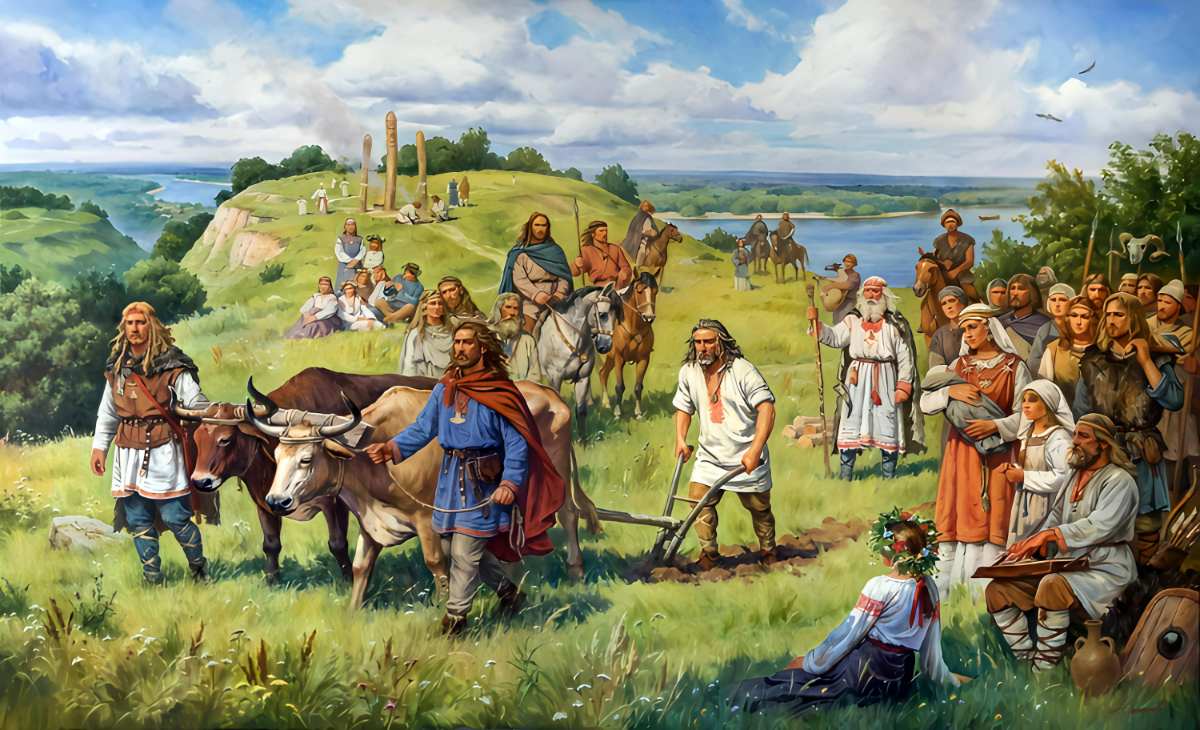Alexander Nevsky was born on May 13, 1220, in the city of Pereslavl-Zalessky, Yaroslavl region. He was the second son of Grand Prince Yaroslav Vsevolodovich, a descendant of Monomakh. His mother, Feodosia, was the daughter of the renowned Turov Prince Mstislav Mstislavich Udatny. He spent his childhood and youth mostly in Novgorod.
In 1225, Yaroslav “tonsure the sons into princes,” a rite of initiation into knighthood, and soon appointed Alexander and his older brother Fyodor to govern in Veliky Novgorod, one of the largest cities of medieval Russia. The boyars of Yaroslav, Fyodor Danilovich, and the princely steward Yakim remained with the children. However, they couldn’t cope with the Novgorod “veche,” and in February 1229, they had to flee with the young princes to Pereyaslavl.
In December 1230, the brothers returned to rule Novgorod. But in 1233, Fyodor unexpectedly died, and Alexander became the elder of the Yaroslavichs. However, the real power remained in the hands of their father. He soon started his first military campaign under his father’s flag against Derpt, which the Livonians were then holding, and won on the Omovzha River.
Three years later, Yaroslav moved to Kiev, which nominally continued to be considered the capital of all Rus. At that time, the sixteen-year-old Alexander became the independent Prince of Novgorod and spent his early years strengthening the city.
Alexander Nevsky’s Family
Spouse: Alexandra, the daughter of Bryachislav of Polotsk; Vassa.
Sons: Vasiliy (before 1245—1271) — Prince of Novgorod; Dmitriy (1250—1294) — Prince of Novgorod (1260—1263), Prince of Pereyaslavl, Grand Prince of Vladimir in 1276—1281 and 1283—1293; Andrey (around 1255—1304) — Prince of Kostroma (1276—1293, 1296—1304), Grand Prince of Vladimir (1281—1284, 1292—1304), Prince of Novgorod (1281—1285, 1292—1304), Prince of Gorodets (1264—1304); Daniil (1261—1303) — the first Prince of Moscow (1263—1303).
Daughters: Evdokia, who became the wife of Konstantin Rostislavich of Smolensk. The spouse and daughter Evdokia are buried in the Cathedral of the Assumption of the Virgin Mary in the Knyaginin Monastery in Vladimir.
Battle of the Neva: Alexander Nevsky’s First Victory
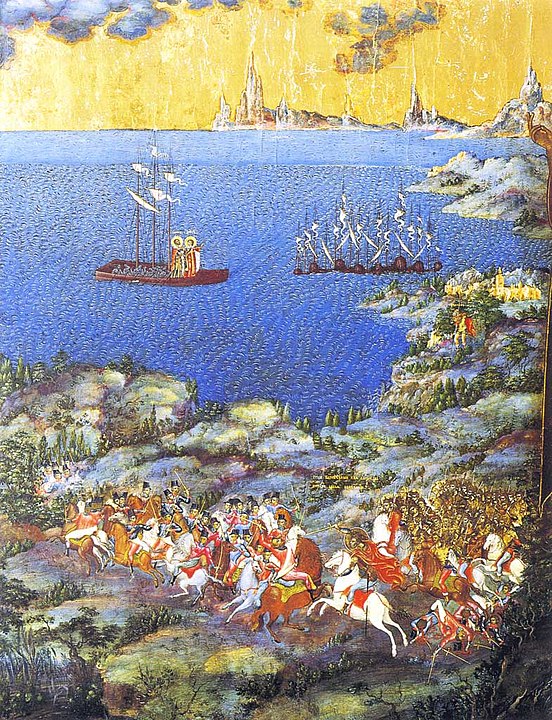
Alexander gained universal fame with his victory on the banks of the Neva River, at the mouth of the Izhora River, on July 15, 1240, against a Swedish detachment. Shortly before that, the Germans approached Pskov, and the Swedes, who contested the Novgorodians’ possession of Finland, entered the Neva, reached the mouth of the Izhora, and moved towards Novgorod. The future ruler of Sweden, Jarl Birger, commanded the Swedish forces.
Alexander, with his retinue and a small group of Novgorodians, suddenly attacked the numerically superior Swedes on July 15, 1240. Caught off guard, the enemy suffered heavy losses. Under the cover of night, the remnants of the Swedish army boarded their ships and fled. This victory not only prevented the loss of Russia’s shores on the Gulf of Finland, stopping Swedish aggression on Novgorod-Pskov lands but also demonstrated Alexander’s talent and strength as a military leader.
It is considered that it was this victory that led to Alexander being called ‘Nevsky.’ Meanwhile, Livonian Germans were also approaching Novgorod. Without stopping at the conquest of the Baltics, they attempted to expand into Novgorod’s lands. Knights of the Teutonic Order captured Izborsk, then Pskov. The entire western part of Novgorod’s possessions was being plundered by German units. Alexander’s first strike was on Koporye, the invaders’ stronghold, and the fortress built by the enemy was taken.
Alexander traveled to Pskov in 1242 with his retinue, an army of Novgorodians, and a group under the command of his brother Andrei, who had come to help from Suzdal land. After liberating the city, Alexander headed to Livonia.
Battle on the Ice

In April 1242, the battle took place on the border with the Livonian Order on Lake Peipus, known as the Battle on the Ice. This victory of Russian forces over the knights on the ice of Lake Peipus added to Alexander’s fame, and his successful military actions ensured the long-term security of Russia’s western borders. In the same year, the Germans sent an embassy to Novgorod, seeking peace. The Order renounced all claims to Russian lands and requested an exchange of prisoners. A peace treaty was concluded.
During the Battle on the Ice, Alexander Nevsky’s forces strategically lured the Teutonic Knights onto the frozen lake, where the Knights’ heavy cavalry became immobilized. This allowed the Novgorodians to engage in effective hit-and-run tactics.
After the Battle on the Ice, the Crusaders did not trouble Russian lands for eleven years. However, in 1253, they violated the peace treaty and approached Pskov but were repelled by the people of Pskov and the reinforcements from Novgorod.
The Battle on the Ice was a pivotal battle fought in 1242 between the Russian forces led by Alexander Nevsky and the Teutonic Knights. It is significant because it marked a decisive victory for the Russians and is celebrated as a symbol of Russian resilience against external threats.
Correspondence with the Pope
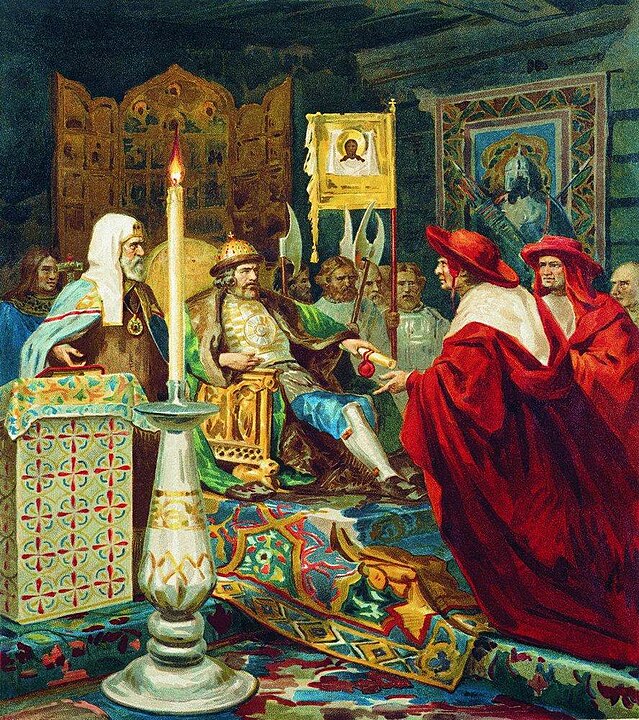
There is information about two messages from Pope Innocent IV to Alexander Nevsky. In the first, the Pope suggests that Alexander follow his father’s example and submit to the Roman throne before his death, citing the work of Plano Carpini, in which this information is absent. The Pope also proposes coordination of actions with the Teutonic Knights in the event of a Tatar attack on Rus.
In the second message, the Pope mentions Alexander’s agreement to join the Roman Church, stating, “You have earnestly requested to be united as a member to the head of the Church through true obedience” and to build a Catholic church in Pskov. He also requests the acceptance of his envoy, the Archbishop of Prussia.
In 1251, two cardinals arrived in Novgorod to meet with Alexander Nevsky, bearing a bull. In Vladimir, Metropolitan Cyril, a friend of Daniel of Galicia who had received the royal crown from the Pope in 1246–1247, crowned Andrei Yaroslavich and Ustinya Danilovna almost simultaneously. In the same year, Lithuanian Prince Mindovg converted to the Catholic faith, thereby securing his lands against the Teutonic Knights. According to the chronicler’s account, Alexander Nevsky, after consulting with wise men, recounted the entire history of Rus and concluded by saying, “We know all this well, and we do not accept teachings from you.”
Last Years and Death

Together with his brother Andrei, Alexander went to the Horde in Batu to obtain permission for the grand princely rule after their father’s death. From there, they were sent to the Great Khan in Mongolia. They returned to Rus only after two years with charters for ruling. As a result, Alexander was recognized as the “senior” among the Russian princes; he received Kiev and “All Russian Land,” and his brother Andrei became the Vladimir Prince. However, Alexander did not go to Kiev, which had suffered greatly and lost all significance after the Mongol defeat, and continued to rule in Novgorod.
Andrey was unable to make peace with the Tatars, and therefore, he didn’t rule in Vladimir for long: Tatar forces moved against him, he was defeated, and he fled to Sweden. During these events, Alexander was in the Horde and received a charter for the grand princely rule in Vladimir. From that time until his death, he held the title of Grand Prince of Vladimir while also remaining the Grand Prince of Kiev.

After establishing himself in Vladimir, Alexander became as much a defender of Russian lands against the Tatars as he had been against the Swedes and Germans. However, he adopted a different approach: on one hand, he restrained his subjects from rebelling against the Tatars, and on the other, he tried to secure possible privileges for Russian lands by showing submission to the Khan and paying a significant amount of gold to the Horde as ransom for prisoners.
Andrey soon returned and took up the rule in Suzdal, obtaining forgiveness from the Khan through his brother. Alexander also took steps to consolidate his authority in Novgorod. Previously, Novgorod’s nobility could invite princes from different Russian lands to rule over them, but Alexander established a new order: Novgorod recognized as its prince the one who occupied the grand princely throne in Vladimir. Thus, by becoming the Grand Prince of Vladimir, Alexander retained his rule over Novgorod. He left his eldest son, Vasily, there, but not as an independent prince but rather as his representative.
In 1262, the Golden Horde’s Khan Berke initiated a war against the Mongol ruler Hulagu in Iran and began demanding that Russian troops be sent to assist. Alexander went to the Horde to “save the people from that disaster” and stayed there for almost a year. Apparently, his mission was successful, as there is no information about Russian troops participating in the Golden Horde’s wars against Hulagu. On his way back to Russia in the autumn of 1263, the Grand Prince fell ill.
Alexander Nevsky navigated the complex relationship between Russian principalities and the Mongol Empire. His diplomacy and cooperation with the Mongols helped maintain some autonomy for Russian lands and ensured the safety and prosperity of his people.

Taking the monastic vows under the name Alexius, Alexander Nevsky passed away on November 14, 1263, in Gorodets on the Volga and was buried on November 30 in the Monastery of the Nativity of the Virgin in Vladimir. In 1724, by the order of Peter the Great, Alexander Nevsky’s relics were ceremoniously transferred to the Alexander Nevsky Lavra in St. Petersburg, where they rest to this day in the Holy Trinity Church. At the Moscow Council in 1547, Metropolitan Macarius had Alexander Nevsky declared one of the Righteous by the Russian Orthodox Church.


